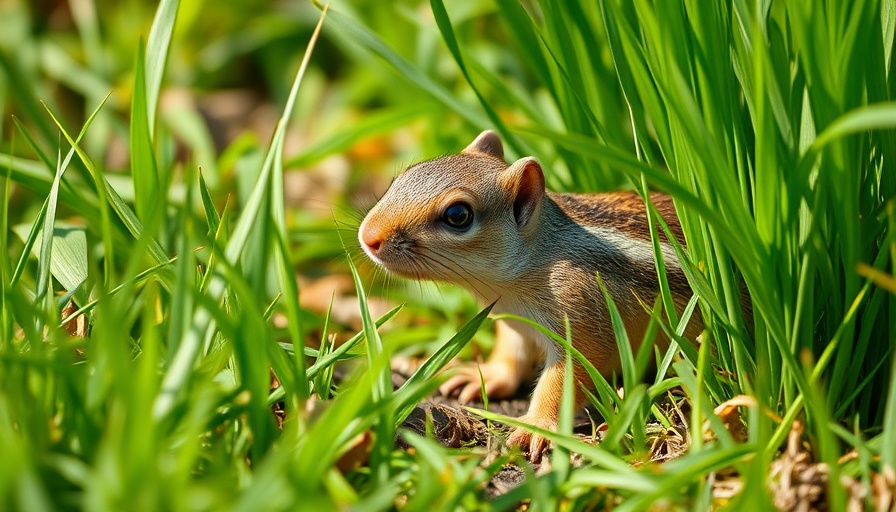
Ground Squirrel Invasion: A Furry Challenge for Minot
In recent months, the quaint city of Minot, North Dakota, has found itself at the center of an unusual urban wildlife phenomenon: a burgeoning population of Richardson’s ground squirrels. As these furry creatures increasingly encroach on residential areas, city officials are scrambling to mitigate what they call a full-blown invasion. With residents raising eyebrows and wildlife experts scratching their heads, the situation begs the question, how did the ground squirrels become such uninvited inhabitants of Minot?
The Growing Population: What’s Behind the Surge?
Richardson’s ground squirrels are not new to North Dakota; however, their rapid population growth in Minot has created significant challenges. Experts argue that a combination of escalating temperatures and urban development has made the area more hospitable for these rodents. As fields are replaced by new housing and commercial spaces, the squirrels have adapted, thriving on human discards and expanded habitats. This begs the question of how urbanization interacts with wildlife, a topic that resonates beyond the grasslands of the Midwest.
Officials Fight Back: Strategies in Limbo
As the ground squirrels dig their burrows deeper into the city's soil, Minot officials are deploying a mix of pest control strategies. From carbon monoxide gassing of burrows to active trapping, the city is committed to reclaiming its space. However, the legality and ethics of such measures have ignited a debate among locals and animal rights advocates. How do we balance the safety and comfort of human residents with the ethical treatment of wildlife?
A Ripple Effect: The Broader Implications of Wildlife Incursions
The situation in Minot serves as a reminder of the delicate balance between urban growth and wildlife preservation. Cities around the world are grappling with similar challenges, as habitats shrink and animal populations adapt. This phenomenon is relevant not just locally, but globally as urbanization continues to grow at an alarming rate. Cities must consider strategies for coexistence, moving towards sustainable practices that protect both people and wildlife.
Local Perspectives: Residents Speak Out
For many residents of Minot, the presence of ground squirrels has sparked more than just annoyance; it’s incited fear and frustration. “I’ve got my children playing outside, and I worry about them running into these critters,” says local resident Jane Adams. Parents like Jane are rallying for immediate action, while others express a desire for humane solutions. This divergence in opinions highlights a community grappling with its identity and values.
Innovations in Urban Wildlife Management
As the conflict between humans and Richardson’s ground squirrels escalates, experts are turning to innovative strategies for managing urban wildlife. Examples of successful coexistence strategies include habitat irrigation and drafting local policies that protect wildlife while simultaneously safeguarding urban landscapes. Could Minot be a testing ground for future initiatives that blend nature with urban living?
Conclusion: Finding Common Ground
The issue of ground squirrels in Minot exemplifies a larger narrative in the ongoing saga between civilization and nature. As emerging urban landscapes clash with historical ecosystems, residents and officials must collaborate to seek effective resolutions. Whether through innovative pest control measures or community wildlife management programs, clear communication and unity will be key in navigating this furry threat.
Stay tuned as we continue to follow the ground squirrel situation in Minot and explore how other cities tackle similar wildlife challenges. Let’s find solution pathways that promote both urban comfort and environmental respect. It’s time for a deeper conversation about how we can all coexist in this ever-evolving landscape.
 Add Row
Add Row  Add
Add 




 Add Row
Add Row  Add
Add 

Write A Comment